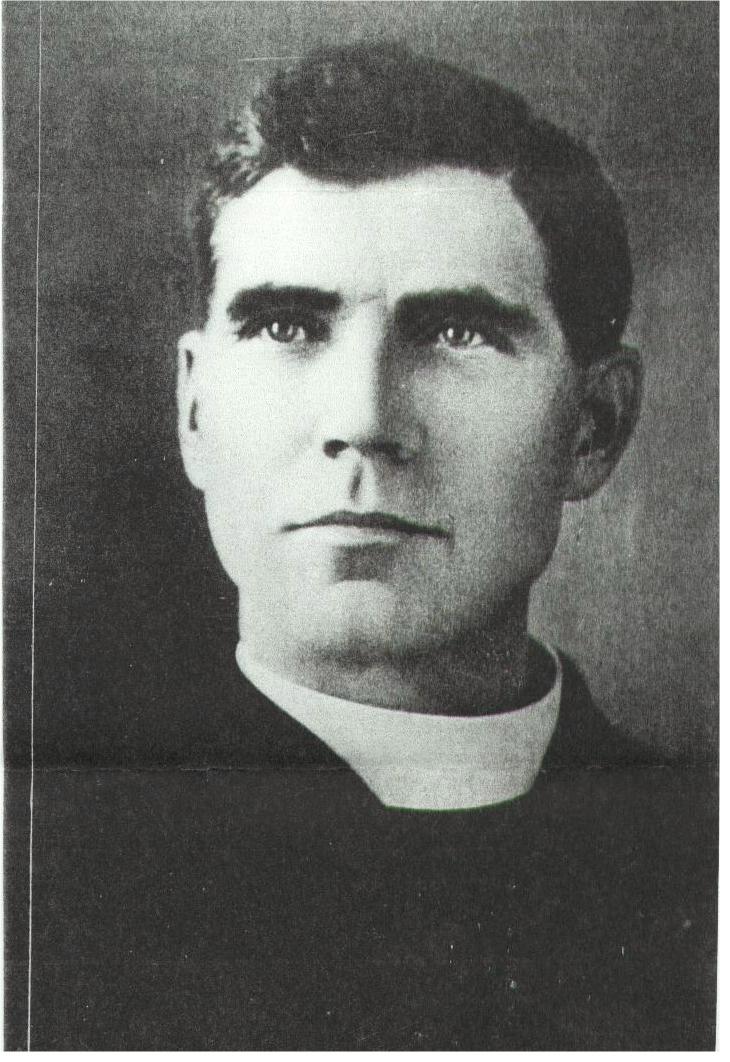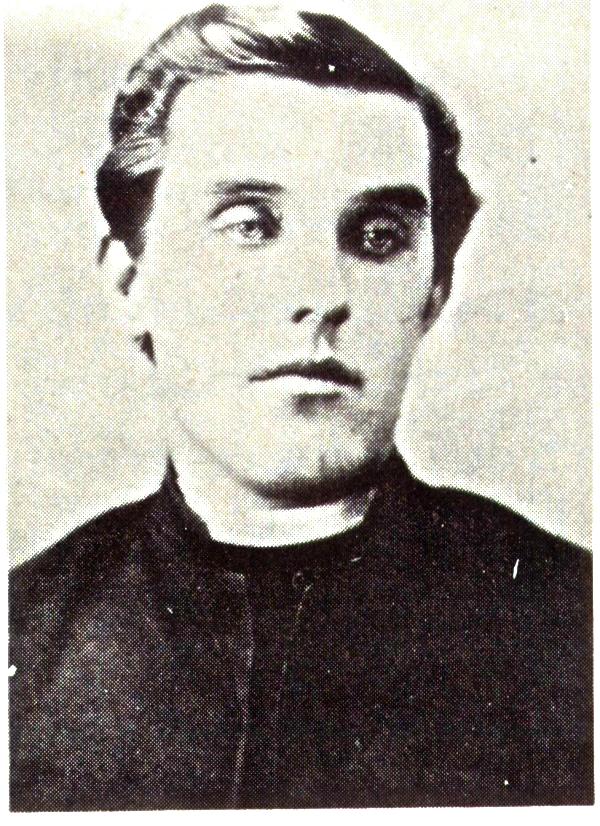|
This special page is devoted to Father Mark Cooney and his brother Father Patrick Cooney. Both were products of Moyne Latin School and St. Patrick's College, Carlow. Both were ordained for the Diocese of Dubuque, Iowa, USA, as requested by Bishop Hennessy, the Bishop of Dubuque. And both died too young, having given their priestly lives in ministry to the pioneer settlers of Iowa.
|
|

1.4.3 MARK COONEY (2/24/1859 - 10/27/1909) Son of John and Mary (O'Rourke) Cooney (1.4). He was educated at Moyne Latin School and St. Patrick's College in Carlow, where he was ordained on May 19, 1883 for Dubuque, Iowa at the age of 24. Fr. Mark came to America that same year and his first appointment was at St. Joseph's Parish in Farley, Iowa. Later in 1883 he was assigned to the faculty at St. Joseph's College in Dubuque, Iowa where he taught for one year and was then named President. The catalog for the 1884 scholastic year for the College lists Rev. M. Cooney as President and "Professsor of Latin, Synonyms and Shakesperean Reading, Rhetoric, Literature and English Composition". The 1885 catalog reflects that
The Sodality of the Blessed Virgin Mary was organized during the past year and was affiliated to the Roman College. Its object is to foster among its members a special devotion to the Mother of God. Rev. M. Cooney, Spiritual Director. All the students were members during the past year."
Clearly, it didn't take long for Fr. Mark to put his stamp on the College!
The College was later renamed Loras College after the first Bishop of Dubuque, Rev. Mathias Loras, and is now the premier Catholic liberal arts institution in Iowa. (Click here for Loras College today.) Plans are underway to provide a memorial of some kind to Fr. Mark at Loras College. (Leave a note in our Guestbook if you're interested in learning more about this). After ten years of success in building the college, which included incorporating it, consolidating its curricula, and enlarging its physical plant, he took a sabbatical assignment to the mission churches of St. Patrick and St Mary in the Iowa towns of Nevada and Colo, respectively, from September 1894 to November 1895.
He returned in good health and re-energized and was appointed Pastor of St. Joseph's Catholic Church in Waterloo, Iowa on November 4, 1895 where he remained until his untimely death in 1909. His work there was crowned with success from the very beginning. He built the present brick church in 1901 and a home for the Sisters of Charity teaching at Our Lady of Victory Academy. The other structure built by Father Cooney is the present rectory. Unfortunately he was never to live in it. He died October 27, 1909 aged 50 years, from complications after an appendectomy a week earlier. His leadership in the Archdiocese of Dubuque was recognized by his many positions of responsibility, including that of Judge Delegate of the Archdiocese October 3, 1906 to September 30, 1907. His obituary in the Dubuque Catholic Tribune (11/4/09) referred to him as an "able priest... (and) one of the most prominent men of the diocese." He is buried with his brother Fr. Pat in Calvary Cemetery, Waterloo, (Block H, Lot 118). For more on Moyne Latin School and Irish "hedge schools", click here.

1.4.4 PATRICK COONEY (3/1/1862 - 7/4/1900) Son of John and Mary (O'Rourke) Cooney (1.4). Like his brother Fr. Mark, he was educated at Moyne Latin School and St. Patrick's College Carlow where he was ordained in 1891 for the diocese of Dubuque, Iowa. His initial assignment in America in 1892 was as pastor of St. Agnes Parish and St. Kieran's Parish in Plymouth Rock, Iowa. A history of the times records that farmers and their families would arrive early to get a seat for the Sunday morning Mass at St. Agnes, but would often have a long wait as Fr. Pat completed his customary hour-long sermon at St. Kieran's and then rode the several miles to St. Agnes, where the Mass and sermon wouldn't be completed until 2 PM. The town of Plymouth Rock took its name from a dramatic tower of rock along the Upper Iowa River, the fastest flowing river in Iowa and a major tributary of the Mississippi. It is a place of high cliffs and spectacular beauty. Originally densely wooded, it was gradually cleared and dairy farms and wheat fields flourished along the river. The townland of Plymouth Rock had a population of about 30 when Fr. Pat arrived, but the church drew families from many miles north and south of the river.
Today, Plymouth Rock has been incorporated into the town of Cresco, Iowa. St. Agnes Church (the successor structure to the one Fr. Pat knew) survives only as an Oratory, and St. Kieran's stands no more. Fr. Pat remained doing pastoral work in Plymouth Rock until his unexpected and sudden illness and death at the age of 38 in 1900. The story is told by his niece Molly that he dove into the water trying to save a man's life, but lost his own to pneumonia which ensued. Father Mark took charge of the obsequies, concelebrated the funeral Mass, and buried his brother in Calvary Cemetery, Waterloo, Iowa, (Block H, Lot 118). Fr. Pat and Fr. Mark, with their uncle Fr. Edward, are still well remembered and celebrated priests today. They were all graduates of the famous Moyne Latin School in County Longford, which prepared boys who, after further studies and ordination, would minister as priests to the Irish diaspora to the ends of the earth, so that Longford was referred to as the "levitical district" of Ireland. |